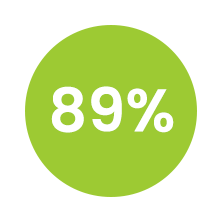By Clay Lester Like a modern day Noah, an older gentleman lines everyone up in pairs of two. Facing my partner, an energetic young lady in her seventies, I allow a moment to orient myself to my surroundings. The open space of the Berea Folk Center, exposed wooden planks reaching toward a central point high overhead, has a cathedral-like quality—not all that different from how I imagine the ark may have looked from the inside. The inhabitants of this vessel appear to be as diverse an assortment of sizes, shapes, ages, and backgrounds as any of Noah’s travel companions. The attire ranges from casual/comfortable/quirky to almost formal in some instances. One would be hard-pressed to find another setting with such an array of characters, save for central casting. As I watch a dapper fellow on the sidelines slip out of his street shoes and into his dancing shoes I look down at my aged Chuck Taylors and wonder if I’ve made a huge mistake. “Nobody was born knowing how to contra dance,” encourages George Oberst, founding member and current chair of the Contraire Dance Association of Berea, “but it’s not too hard to learn.” George explains that modern contra dances, with regional incarnations owing as much to their local indigenous cultures as to their historical influences, evolved from English country dance. “English country dance had its very definite purpose at the time it was most widely practiced. It was a way to facilitate courtship.” As one gathers from Jane Austen novels and film adaptations, English country dance is squarely on the formal end of the dance spectrum. Rigid social expectations and proprietary norms allowed for minimal contact between males and females, and this is reflected in the somewhat stiff, highly choreographed dance style. Far from stuffy, however, these dances held in the large halls of sprawling country estates represented an opportunity for mixing, mingling, and socializing that would have otherwise been viewed as unfitting the youth of the age. Some of these early English country dances undoubtedly set the stage for all manner of awkward interactions and clumsy encounters, but I am oddly at ease as we prepare to dance. My dance partner signals to me with her attentive eyes and suddenly upright posture, which is not altogether unlike that of a snake coiled and ready to strike, that something is about to happen. The band counts off and starts into what feels like a waltz with touches of bluegrass mixed with chamber music. A voice, the “caller” as it is later explained to me, is echoing through the sound system, providing step-by-step instructions for the dance about to start. After this thorough explanation and a couple of practice moves, my embarrassing lack of contra knowledge is finally eclipsed by my curiosity and the enthusiasm of my assigned partner. We are ready to put all the pieces together, throw caution to the wind, and commence the real dancing. Although they are apparently a popular pastime throughout Kentucky (and beyond), I was not familiar with contra dances prior to joining the Christian Appalachian Project (CAP) family. A frequent source of weekend entertainment for CAP volunteers, contra dances have become a tradition woven into the fabric of CAP. Mike Loiacono, Director of CAP Human Services in the Cumberland Valley region explains, “Contra dancing has been a constant part of CAP volunteer life, even before I came to CAP in 1997. I’m not saying all volunteers have tried it or that they all liked it, but for the significant portion of us that have, it ties us all together.” There is even a contra dance planned for the 2015 CAP Volunteer Alumni Reunion. Mike and his wife, Elizabeth, are contra enthusiasts, although “contra evangelists” may be a more accurate description. On his introduction to contra, Mike says, “It was peer pressure, pure and simple. ‘All the other volunteers are doing it, come on!’ They practically had to drag me to my first dance; I was convinced I would hate it. Seventeen years later, I’m not only still contra dancing, I’m playing in a contra dance band and helping my wife organize local dances and a summer “Cumberland Dance Week” family camp.” On this particular occasion, Mike’s band, “Mixed Nuts,” is providing the soundtrack for the evening. The band plays, the caller calls, and I am chaotically swung through paces of the dance—like a bouncy ball being knocked about the spinning gears of some great machine. Luckily my partner seems to be a pro, not to mention extremely patient, and with each repetition of the pattern my confidence builds. As I gain my “sea legs,” the topsy-turvy gives way to the ecstatic and I begin weaving in and out of the dance line with conviction (and a little something I like to call “razzle dazzle”). With all the dancers and the caller and the band in a sort of rhythmic communion, the contra dance becomes a human kaleidoscope of beautifully spinning patterns and flourishes. Each turn brings with it a new partner and new pressure to not interfere with the flow of movement. Just as I let go of my last shred of inhibition, the music comes to a halt and we collectively retreat to the refreshment tables and await the announcement of the next dance’s start.
Submitted by clester2014
on Thu, 02/05/2015







